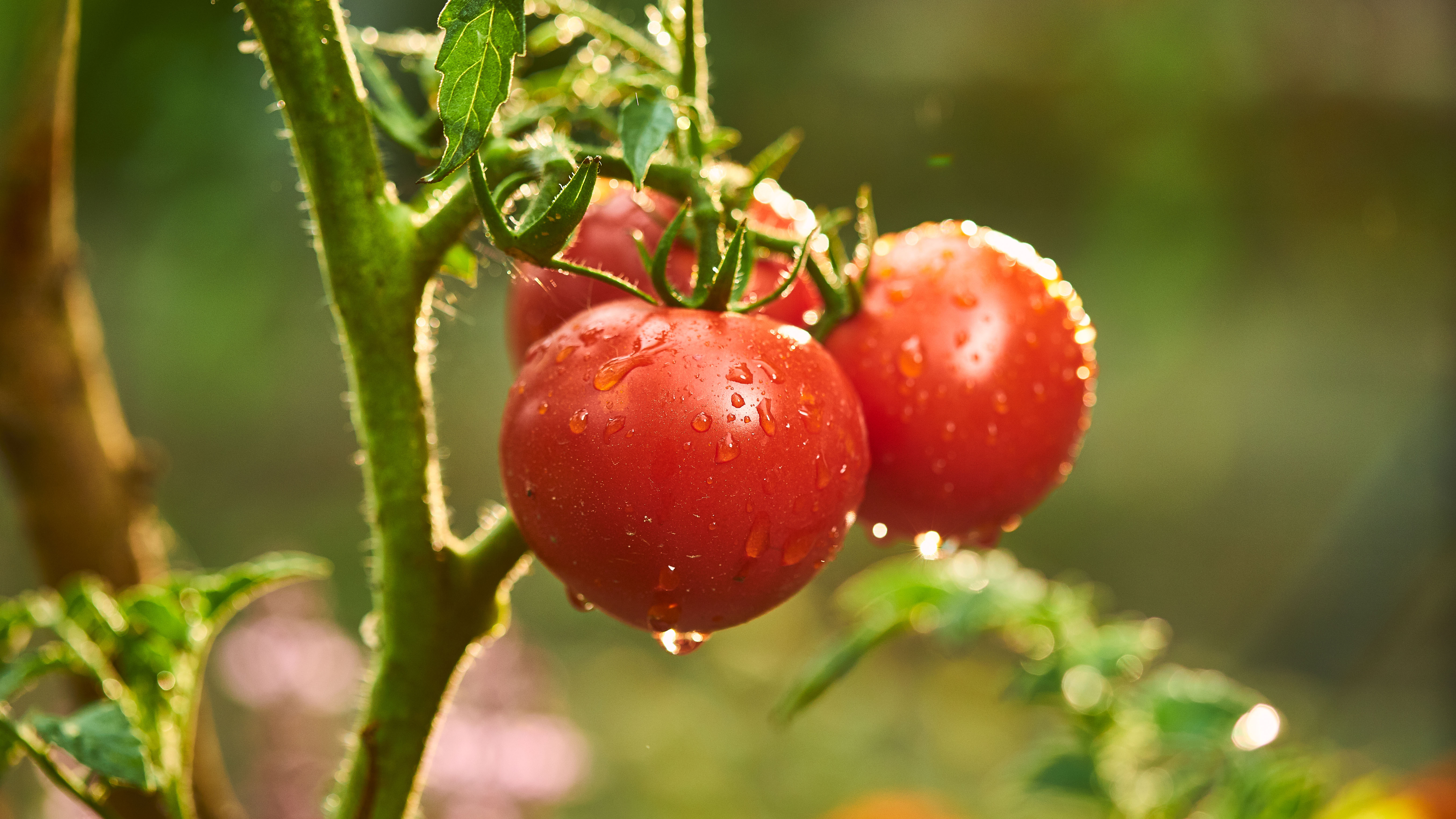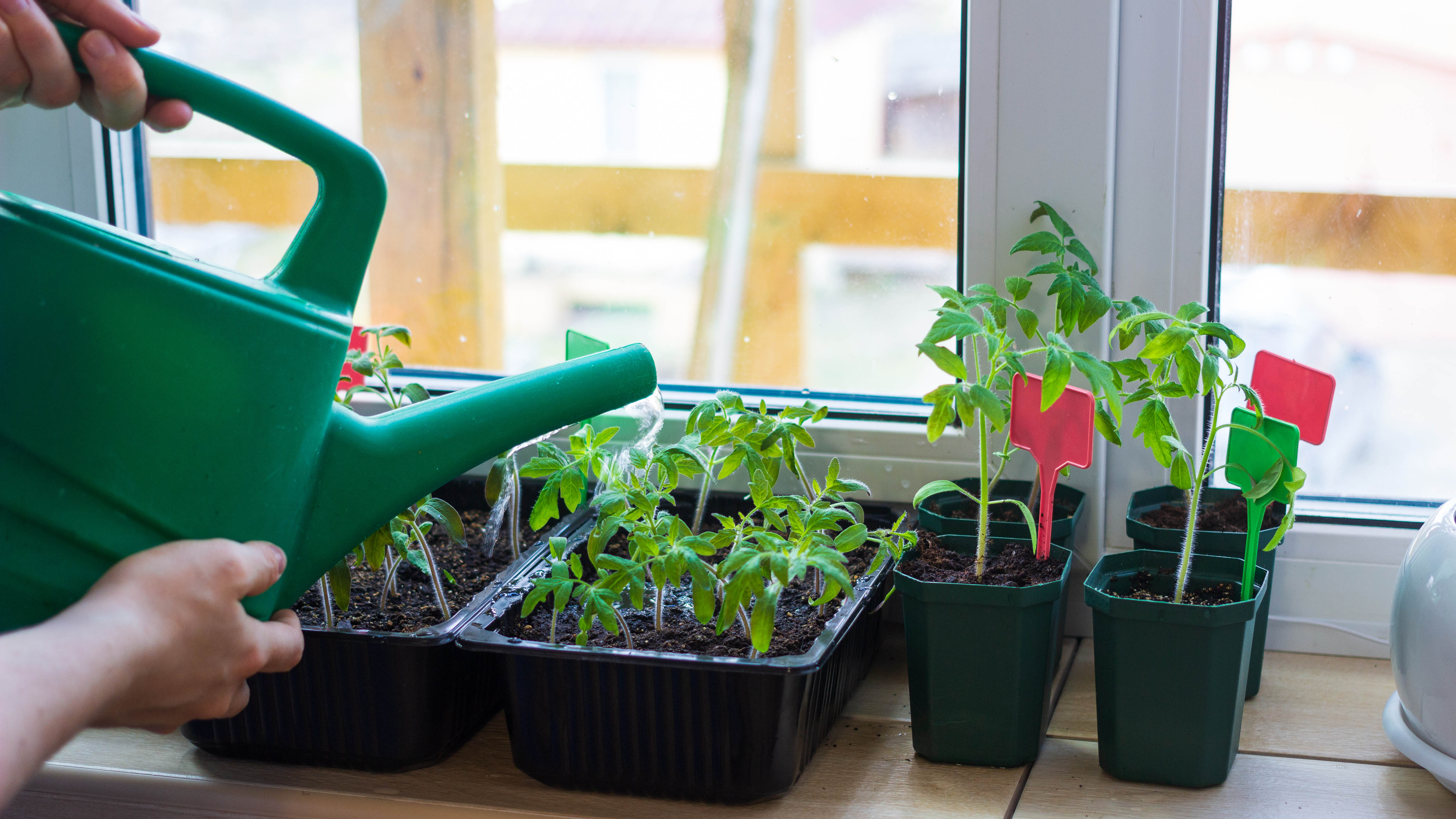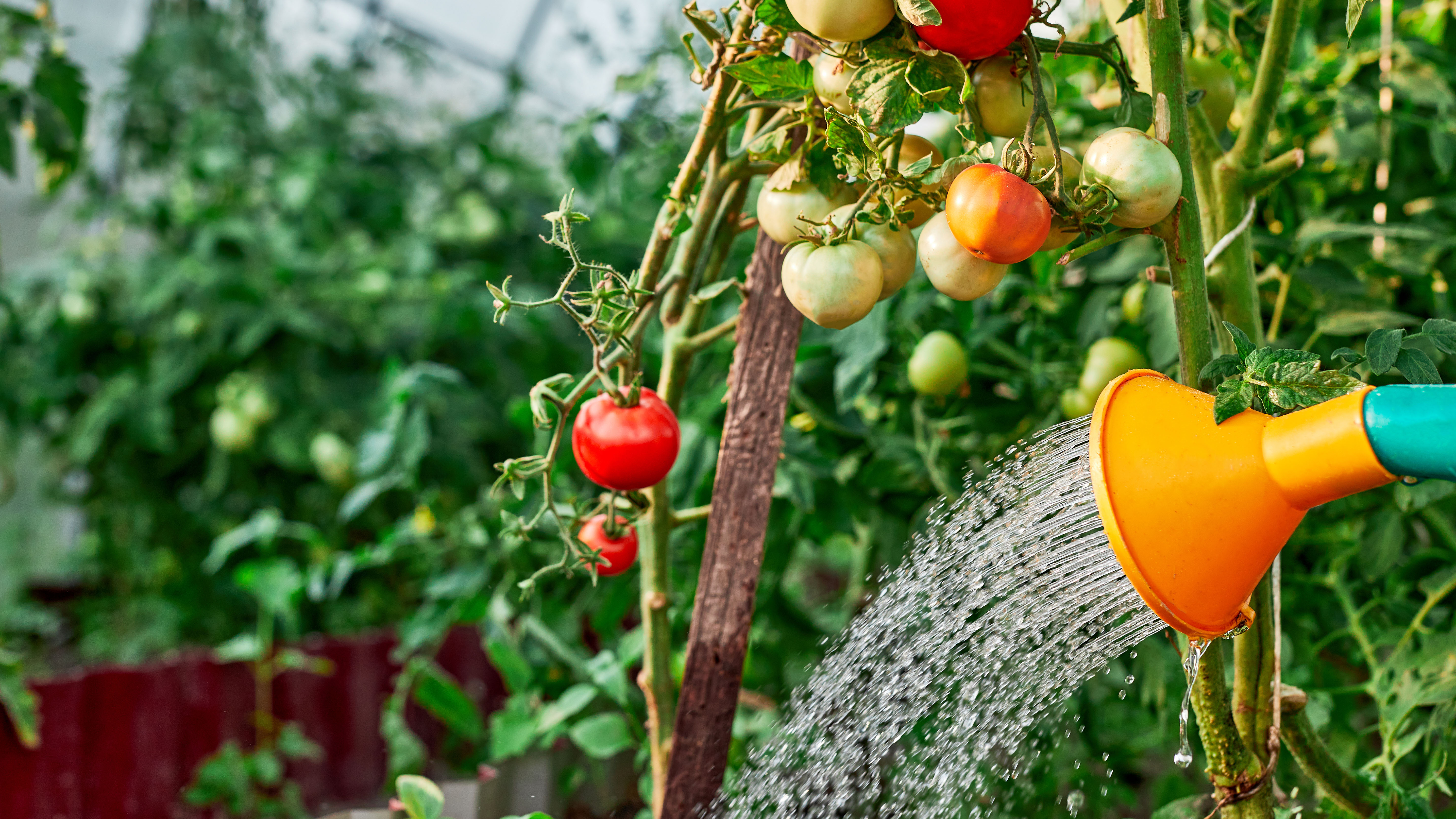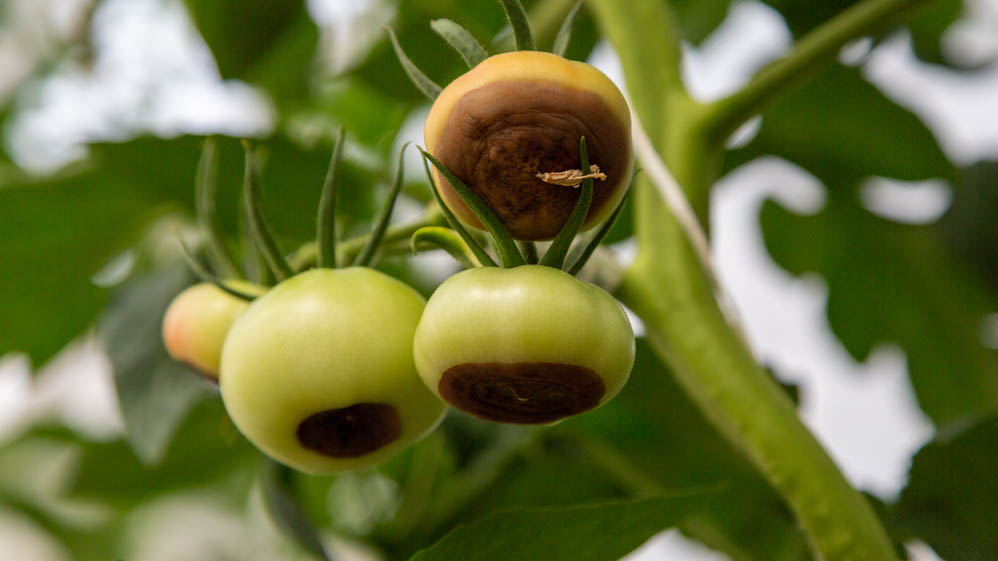How often should you water tomato plants and when should you do it?
If you've ever wondered how often you should water tomato plants, find out here

Whether you’re new to tomato plants, or a seasoned gardener, you'll need to know how often you should water tomato plants. Tomato plants are one of the most popular choices for home-grown vegetables — they’re straightforward to grow, quick to prune, and they produce ready-to-pick, delicious results.
The problem is, it’s all too easy to make a mistake when it comes to these plants. In fact, here are 7 mistakes to avoid when growing your own tomatoes. And while you can learn how to get rid of tomato blossom end rot, saving a tomato plant which has been over-, or under-watered is a whole other challenge. Before you know it, the plant is past recovery, and you’ve lost your tomato supply.
That’s why it’s essential that every tomato plant enthusiast learns how often to water these plants as well as when to do it, because knowing when to water your tomato plants is also one of the 7 top tips for growing juicy tomatoes. Here, we cover everything you need to know to keep your tomato plants flourishing all-year-round.
Plus, here are 11 things to do when overwintering tomato plants. And check out these 5 tips to ripen green tomatoes, plus when is the best time to pick tomatoes off the vine?
How often should you water tomato plants?
How often you water your tomato plants and how much water to use will vary depending on the plant’s maturity as well as the external conditions.
If you’re dealing with seedlings, the soil will only need a small amount of water, to the point where it is moist, but not soaked. This level of moisture will be adequate for the seeds to germinate. The soil will dry out quickly though, and because the plant is still young and growing, it needs regular attention. You should aim to water seedlings once a day, potentially twice if the plants are subjected to a hot climate.

When it comes to moving your seedlings to pots, you should ensure the pots have drainage holes and a suitable tray. That way the excess water can drain from the soil and collect underneath. If the water can’t drain, it will sit in the soil and suffocate the roots, eventually leading to root rot, so this detail is crucial. Both terra cotta and plastic plant pots work well for this, although plastic will retain water better between these two. If you choose to use a hanging basket, bear in mind it will require more frequent watering as the soil won’t retain the water as efficiently.
Sign up to get the BEST of Tom's Guide direct to your inbox.
Get instant access to breaking news, the hottest reviews, great deals and helpful tips.
With mature tomato plants, watering generously and regularly is best. Make sure you keep on top of its progress and adjust your routine as necessary. Water your tomato plants every day in the morning to start, aiming to apply about 1-2 inches of water over the week. If you live in a hot climate or your tomatoes are in pots, make sure you take the time to check the moisture levels of the soil in the afternoons as well — you can do this by dipping your finger into the top inch of the soil. If the soil is already bone dry, you might need to water as much as twice a day. Likewise, if the temperature drops, you can scale back how much water you apply.

Do not overwater the soil though — it should be moist, but not soggy, otherwise you’re risking root rot once again. You also shouldn’t water your tomato plants if the soil is still moist from the previous watering session. If you’re unsure of the soil conditions, you can always buy a soil meter. We recommend the XLUX Soil Moisture Meter ($12.99, Amazon). If your tomato plants are outside, remember that rain water will count towards your weekly limit as well.
When watering your tomato plants, apply the water slowly and deeply around the base of the stem — this speed is necessary for better control of the quantity and application. You should extend the water out in the soil to encourage wide root growth as well. Do not tip the water directly over the plant and leaves; this can encourage disease and also wastes any water which evaporates before it hits the soil.
When should you water tomato plants?
As mentioned earlier, watering your tomato plants in the morning is best. This is because it gives the moisture a chance to penetrate the soil before being evaporated by the sun’s peak hours of the day. It also means the plant has a chance to dry before being subjected to the sun and heat, which can deter burning.

While watering your tomato plants again in the afternoon may be necessary if the heat of the day has dried out the soil, do not water your tomato plants in the evening. The drop in temperature combined with the moisture can encourage diseases such as fungus and tomato blossom end rot.
If you're also interested in indoor plants, check out our guides on how to care for succulents, how to repot succulents and how to plant grass seed and get a greener yard. We also cover how to care for air plants.

Katie Mortram used to be a Homes Editor for Tom's Guide, where she oversaw everything from kitchen appliances to gardening tools, as well as smart home tech. Specializing in providing expert advice for cleaning and home manintenance, she now works as Household Advice Editor for Good Housekeeping.
